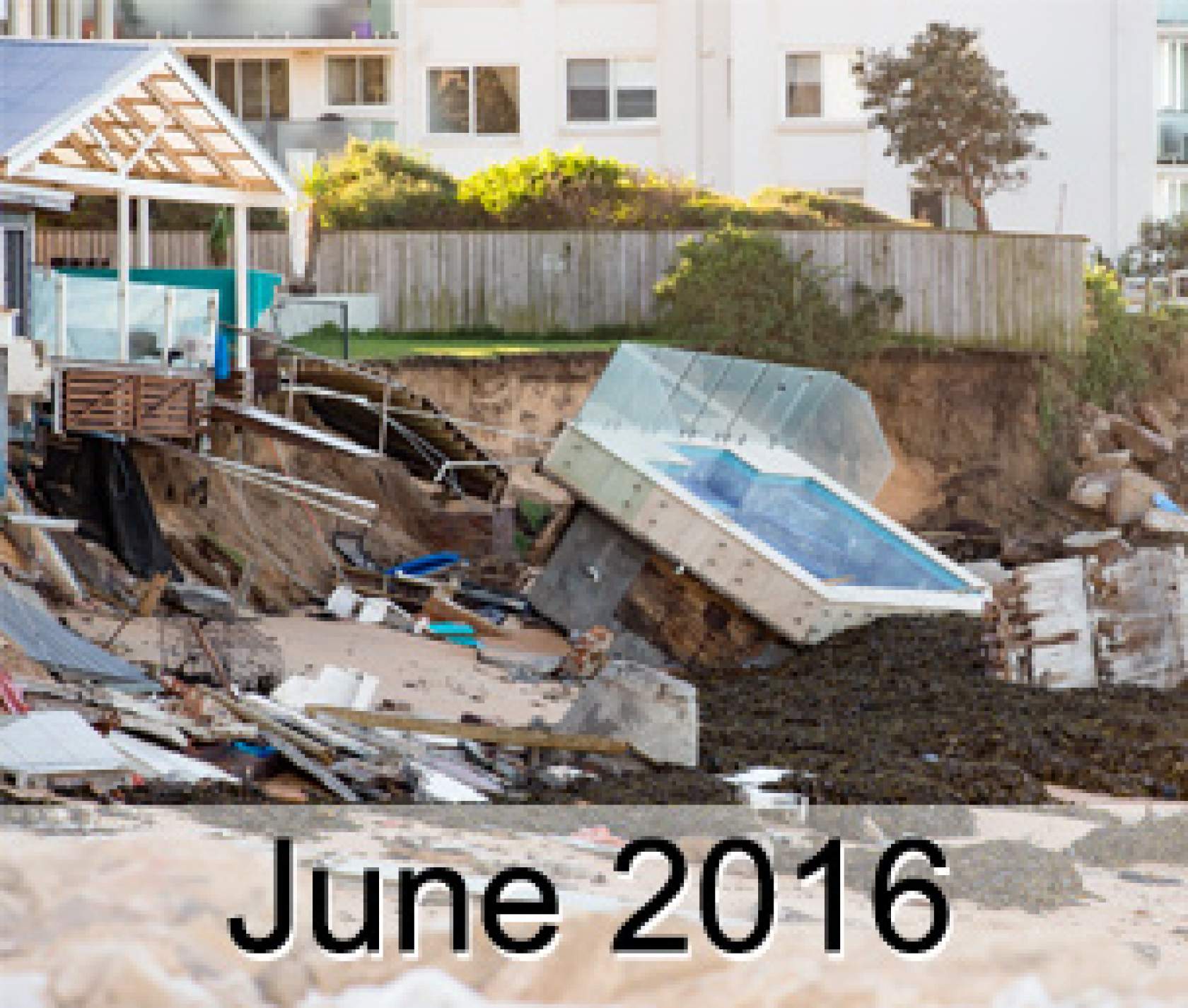Wild storm dumps concrete swimming pool into ocean at Collaroy

Following the recent devastating storm on the east coast of Australia, questions were being asked about why the properties along Collaroy Beach in NSW were so badly damaged, leading to incriminations about who had objected to the building of a seawall, and which owners had refused to chip in to its cost.
One image shown around the world was of a reinforced concrete swimming pool that had come loose from the ground and was deposited onto the beach.
Many observers have asked how a swimming pool could have been approved and built so close to potentially hazardous waters. An article on news.com.au quoted a report from the natural environment unit saying that as the pool is to be located within the area of wave impact, it is likely to be damaged during a coastal storm, and that taking this into account it had to be suitably designed to withstand the impacts of coastal erosion and wave impact resulting from a one in 100 year ARI (Average Recurrence Interval) event.
SPLASH! spoke with the engineer who designed the pool, Savvas Polycarpou, who says the building of a seawall was a matter for the council to decide.
“No one asked me to build a seawall,” he says. “I was asked to make sure the pool did not break up from the impact of the waves and I achieved that I think, but to build a seawall would be very complicated and expensive, we would have to go down to see if we could find rock and we don’t know how far that would be.”
Polycarpou points out that the Pittwater Road property where the pool was built was certainly not the only one affected by the storm. In fact, University of NSW coastal researcher Mitchell Harley has been quoted as saying six homes on Pittwater Road are starting to crack apart as a consequence of the storm.
“Building a seawall would be protecting the property, not the pool,” he says. “It was not my job to protect the whole property. If you look at the other properties, they were all affected by the storm as well.
“To build a seawall for the property would cost three or four times as much as the pool, maybe $200,000 or more and the council did not ask for that, and if they did I doubt the owners would have wanted to proceed,” he says.
To explain his predicament he used an analogy.
“If I am asked to engineer a shed in a backyard, I have to make sure the shed is strong. But I can’t stop something falling from the sky on it.”
The pool DA was approved by a private certifier.
Further powerful storms are expected in NSW this coming weekend (June 18-19).
Image: www.mattkemp.com
Click here for advice on How to Clean a Swimming Pool after a Flood




